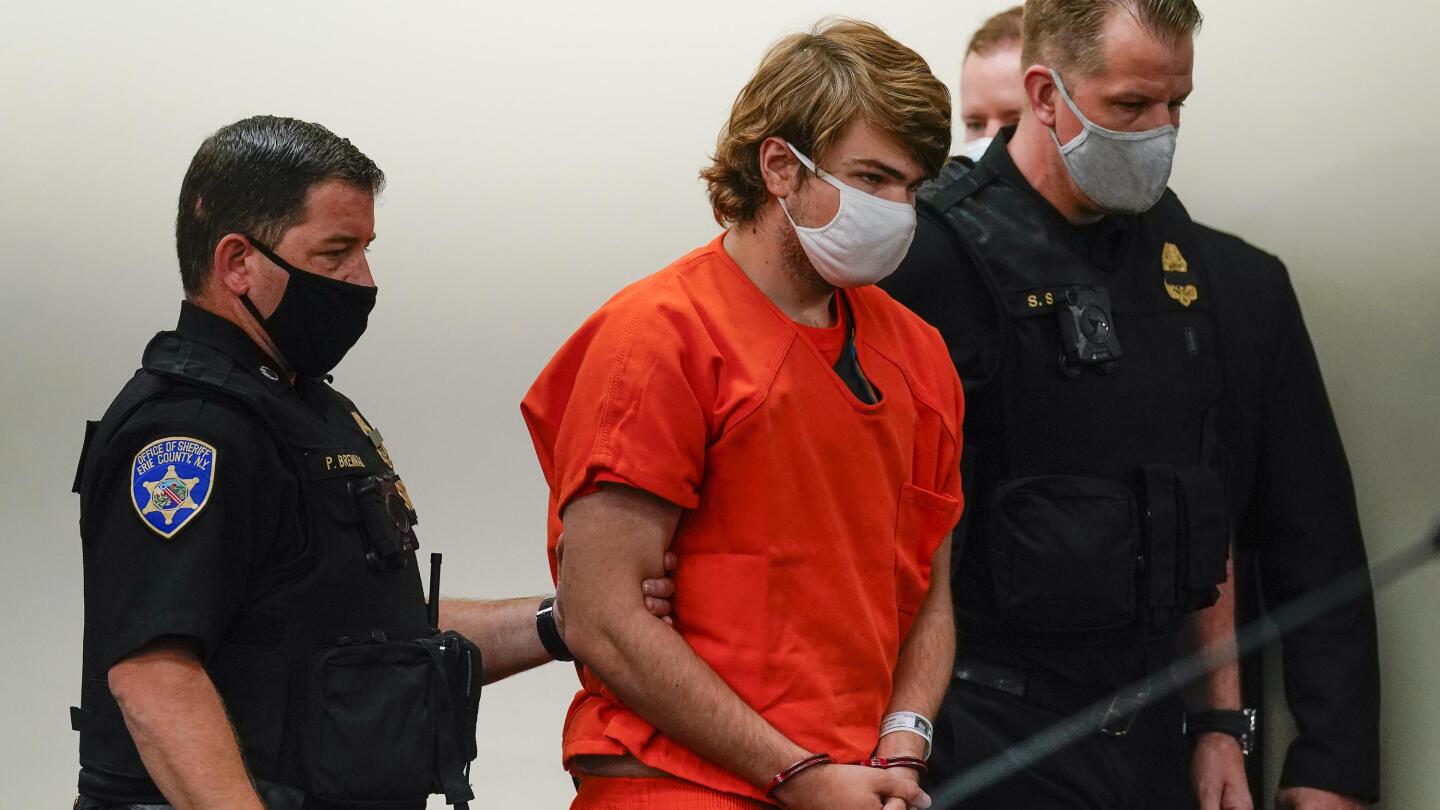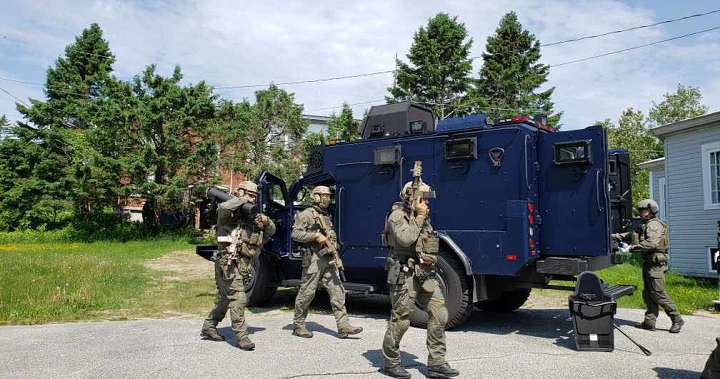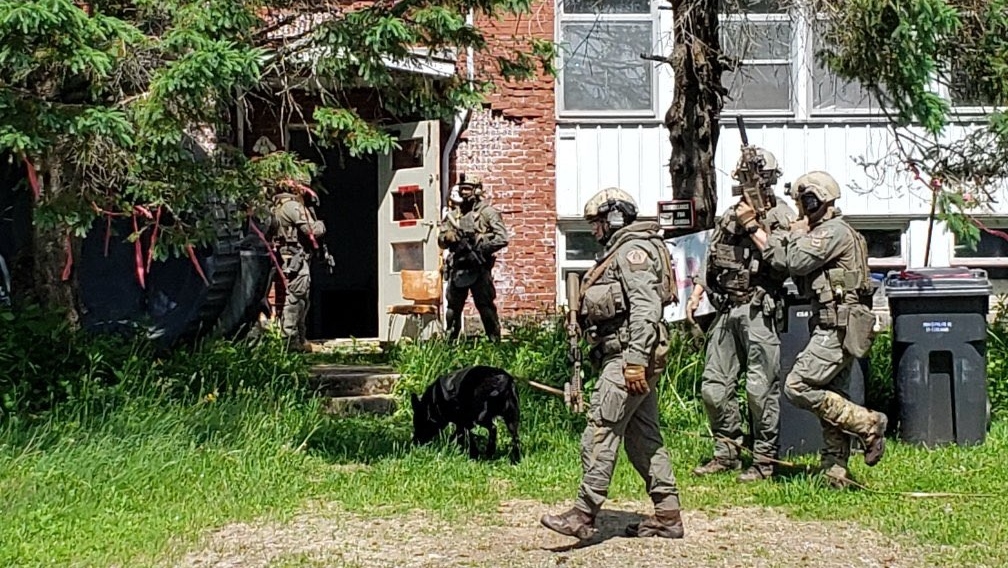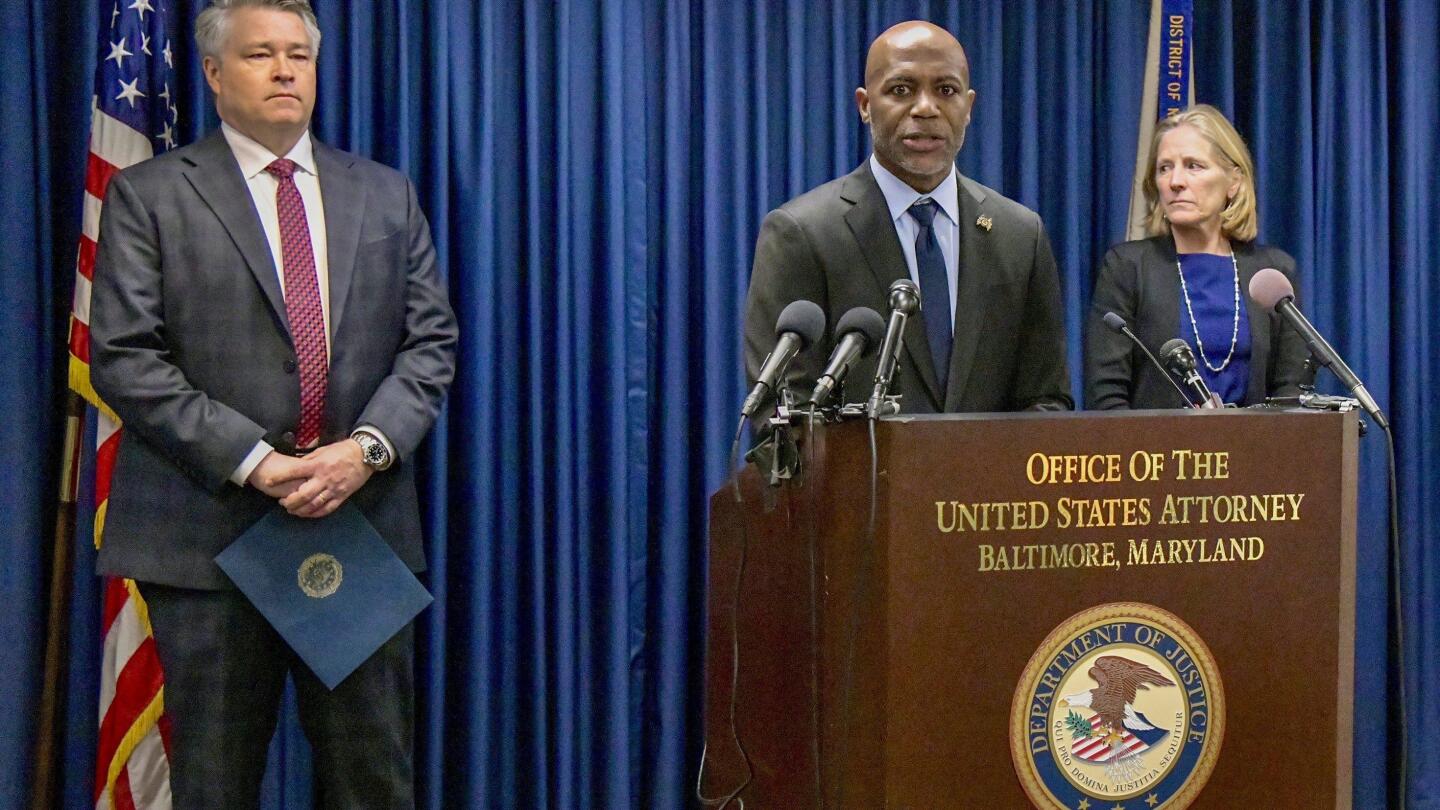Young men “who failed to mature, and whose lives revolved around various grievances, insecurities, and heroic fantasies” are susceptible to extremist ideology that feeds their narcissism, or to commit violence without ideology. I have been think about this for a while, since you don’t usually see well adjusted young men or women in stable, healthy relationships being drawn into violent extremism.
What to do about the deadly misfits among us? First, recognize the problem.

www.theatlantic.com
THE NARCISSISM OF THE ANGRY YOUNG MEN
What to do about the deadly misfits among us? First, recognize the problem.
By Tom Nichols
JANUARY 29, 2023
Some years ago, I got a call from an analyst at the
National Counterterrorism Center. After yet another gruesome mass shooting (this time, it was Dylann Roof’s attack on a Bible-study group at a Black church in Charleston, South Carolina, that killed nine and wounded one), I had written an
article about the young men who perpetrate such crimes. I suggested that an overview of these killers showed them, in general, to be young losers who failed to mature, and whose lives revolved around various grievances, insecurities, and heroic fantasies. I called them “Lost Boys” as a nod to their arrested adolescence.
The NCTC called me because they had a working group on “countering violent extremism.” They had read my article and they, too, were interested in the problem of these otherwise-unremarkable boys and young men who, seemingly out of nowhere, lash out at society in various ways. We think you’re on to something, the analyst told me. He invited me to come down to Washington and discuss it with him and his colleagues.
The meeting was held in a classified environment so that the group’s members, representing multiple intelligence and law-enforcement agencies, could more easily share ideas and information. (I was a government employee at the time and held a clearance.) But we could have met in a busy restaurant for all it mattered—the commonalities among these young men, even across nations and cultures, are hardly a secret. They are man-boys who maintain a teenager’s sharp sense of self-absorbed grievance long after adolescence; they exhibit a combination of childish insecurity and lethally bold arrogance; they are sexually and socially insecure. Perhaps most dangerous, they go almost unnoticed until they explode. Some of them open fire on their schools or other institutions; others become Islamic radicals; yet others embrace right-wing-extremist conspiracies.
I emerged from the meeting with a lot of interesting puzzle pieces but no answers. Since then, there have been more such attacks, more bodies, more grief—but precious little progress on preventing such incidents. A few recent examples: In
2021, a 15-year-old boy murdered four of his fellow students in his Michigan high school. In
2022, an 18-year-old man carried out a massacre in a Texas school;
another, the same age, committed a mass murder in a grocery store in upstate New York. A 21-year-old male attacked a
Fourth of July parade in Illinois. A 22-year-old went on a rampage at an
LGBTQ nightclub in Colorado.
These attacks are not merely “violence” in some general sense, nor are they similar to other gun crimes classified as “mass shootings” beyond the number of victims. Drug-war shoot-outs and gang vendettas are awful, but they are better-understood problems, in both their origins and possible remedies. The Lost Boys, however, are the perpetrators of out-of-the-blue massacres of innocents. Their actions are not driven by criminal gain, but instead are meant to shock us, to make us grieve, and finally, to force us to acknowledge the miserable existence of the young men behind the triggers.
After each Lost Boy killing, Americans are engulfed in grief and anger, but eventually, we are overtaken by a sense of helplessness. Sometimes, we respond by raging at one another; we fight about gun control or mental-health funding or the role of social media as we try to fix blame and reduce a seemingly inexplicable act to something discrete and solvable. But I wonder now, as I did back in 2015, if all of these debates are focusing on the wrong problems. Yes, the country is awash in guns; yes, depression seems to be on the rise in young people; yes, extremists are using social media to fuse together atomized losers into explosive compounds. But the raw material for all of the violence is mostly a stream of lost young men.
Why is this happening? What are we missing? Guns and anomie and extremism are only facets of the problem. The real malady afflicting these men, one about which
I’ve written much in the intervening years since that original article, is the deluge of narcissism in the modern world, especially among failed-to-launch young men whose injured grandiosity leads them to blame others for their own shortcomings and insecurities—and to seek revenge.
The Lost Boys are mostly young and male, largely middle- or working-class. Frustrated by their own social awkwardness, they are so often described as “loners” that the trope has been around from
as early as the 1980s. But these young males, no matter how “quiet,” are filled with an astonishing level of enraged resentment and entitlement about their roles as men, and they seek rationalizations for inflicting violence on a society they think has both ignored and injured them. They become what the German writer Hans Magnus Enzensberger
called “radical losers,” unsuccessful men who feel that they have been denied their dominant role in society and who then channel their blunted male social impulses toward destruction.
And they are, above all, staggeringly narcissistic. Almost all of the recent mass killers, for example, thought they had a special mission in the world. We know this because they felt compelled to tell us so.
Indeed, to search for the killer’s manifesto is now part of the ritual of investigating a massacre, a tradition we might trace back to the Unabomber, the ur-Lost Boy
Ted Kaczynski, whose terror campaign included a demand that the press publish his 35,000-word treatise. (And yet, when he left society at 29, he wrote
in his journal: “My motive for doing what I am going to do is simply personal revenge. I do not expect to accomplish anything by it.”) There are many other examples: the Los Angeles mass killer
Christopher Dorner left behind an 11,000-word screed in 2013;
Brenton Tarrant, who killed 51 people at two New Zealand mosques in 2019, posted a 74-page rant to the internet. (
Patrick Crusius, who murdered 23 people in El Paso in 2019, claimed to be inspired by Tarrant but managed to upload only four pages to the infamous
8chan site.) At this point, so many such documents exist that there are scholarly
research studies analyzing them.
Many of the Lost Boys claim to represent various causes derived from a wide spectrum of sources—sexism, racism, religious bigotry, conspiracy kookery, and anti-government extremism among them. (Nor are all of these aimless young men killers: When I first examined this problem, I also identified a type of Lost Boy who convinces himself that he’s doing good, such as
Bowe Bergdahl, who thought of himself as the fictional action hero Jason Bourne when he deserted his military unit in Afghanistan in 2009, and Edward Snowden, who is the embodiment of a particular kind of nonviolent but nonetheless highly destructive
misfit.)
Narcissism is a common malady, but for the Lost Boys, it is the indispensable primer for a bomb whose core is an unstable mass of insecurities about masculine identity. This, of course, helps explain why such spectacular and ghastly acts are an almost entirely male phenomenon. Women, who are less prone to commit violence in general, are
rarely the perpetrators of these kinds of senseless massacres. In general, they do not share the same juvenile fantasies of power and dominance that are common to adolescent boys. Nor do they tend to harbor the same resentments about sex and status that are common to all teenagers but that in the Lost Boys persist beyond adolescence and soon grow to volcanic levels.
For example, in 2014 Elliot Rodger became a kind of patron saint of “incels,” or involuntary celibates (men angry at women for not having sex with them), when he killed six people and plowed his car into several more in California before killing himself. Rodger
explicitly said his attack was “retribution” against other men—and the women who sleep with them—for having sex while he remained a virgin. Four years later, a self-described incel who’d praised Rodger
killed 10 people in Toronto.
Lives that seem to unwind over problems related to sex or sexual identity are a persistent theme. Micah Johnson, a Black military veteran,
claimed that he was avenging the deaths of Black people at the hands of the police when he ambushed Dallas police officers in 2016, killing five and wounding nine others. Perhaps more pertinent, though, was that Johnson was a failure as a soldier and his life had gone into free fall after he was booted from the Army for
stealing women’s underwear from a female comrade. That same year, Omar Mateen, who had
expressed particular animus toward homosexuals, became a mass killer when he attacked a
gay nightclub in Florida, as did the accused recent Colorado shooter Anderson Aldrich. Aldrich’s lawyers have said that the alleged killer is nonbinary, but
some observers, including a former friend, suspect Aldrich is merely attempting to troll the LGBTQ community.
Another way these young men express their sexual insecurity is to seek heroic redemption by imagining themselves as the defenders of helpless women against sexual threats from other men. Roof, for his part, thought he was on a mission to stop Black men from
raping white women, a common racist trope in America. One of the members of a group of young Muslim men in Canada who planned to
storm the Parliament in Ottawa in 2006 reportedly had a similar motivation, believing that NATO soldiers were raping Afghan women.
This masculine insecurity is even more striking when we consider the number of such young men who chose what we might think of as “the military cure,” by joining the armed forces in an apparent attempt to forge a more manly identity. In a society where relatively few people serve in the military, the Lost Boys are heavily overrepresented among veterans or would-be soldiers. Timothy McVeigh, who went on to become the Oklahoma City bomber, left the Army after being
rejected for Special Forces. Dorner was a naval reserve officer; Johnson and Bergdahl went to Afghanistan. (Before he enlisted,
friends told The Washington Post, Bergdahl had “identified with Japanese samurai warriors and medieval knights.”) Devin Kelley, who opened fire on
a Texas church, joined the Air Force.
Snowden joined the Army and tried for a Green Beret, but washed out. The “American Taliban” traitor,
John Walker Lindh, also went overseas—but for a different army.
Jihadists, especially those radicalized in the West, are also examples of this syndrome. They join organizations that promise to create a powerful male identity, and, in some cases, to
reward them with women as sex slaves. For all their supposed distaste for Western immorality, many of the young males who gravitate toward jihadism are avid consumers of forbidden Western delights, such as
music, alcohol,
drugs, and
pornography. (Even in middle age, Osama bin Laden had
quite a porn collection.) For these men, terrorism may be, among other things, some sort of self-purification, a way to deny their illicit desires by destroying the places and people that supposedly coax them toward perdition. (In a striking parallel, the American Robert Aaron Long—who at 21 had already been treated for sex addiction—is accused of opening fire on a string of massage parlors around Atlanta, killing eight, in an attempt, as
he told law enforcement officers later, to eliminate the source of his “temptation.”)
Fear of women and hatred of minorities, animosity toward authority, patterns of absent or dysfunctional fathers, histories of being bullied, romance with symbols of power, conflicts of identity and sexuality—we can catalog at length the similarities among these young misfits. They are, in the main, scared and narcissistic boys, and like many boys teetering on the cusp of manhood, they are tormented by paradoxes: insecure but drenched in self-regard, fearful yet brave, full of self-doubt yet fascinated by heroism. For most males, this is a transitory part of adolescence. For the Lost Boys, it is a permanent condition, a deadly combination of stubborn immaturity and towering narcissism.
Knowing about the common characteristics of these killers and terrorists does not shed much light on what to do to thwart them. Stricter gun laws, a good idea in general, will not stop the mass murderers already among us who live in a society saturated with easily obtained weapons. Law enforcement can infiltrate and destroy violent militias, terror cells, and other threats, but that will not prevent unstable young men from searching for causes to justify their massacres—if they even bother with such ideas.
Likewise, arguments about “
toxic masculinity,” as tempting as they are in these cases, miss the mark. The problem of toxic masculinity is real, but the swaggering jerks and violent abusers who sometimes become a threat to their partners (and themselves) are distinct from the insecure man-boys who decide to prove their worth—or just to prove that they exist—by committing extraordinary acts of mass murder. And, in general, toxic men are easy to spot. The Lost Boys are, by their nature, usually invisible until they strike.
Performative mass killings and large-scale terrorism are mostly post-1970s phenomena, and we can likely trace at least some of the Lost Boy problem to the rapid emergence in the past 40 years or so of a hypersexualized and yet lonelier, more atomized society. Likewise, the social institutions that once shaped and restrained the worst impulses of young men—religion, the military, schools, and even marriage itself—have gone through drastic and irrevocable changes in the same period.
We can lament some of those changes—I certainly do, particularly the collapse of a kind of mature sense of stoicism and self-control among men. But we cannot reverse them, not least because that would, in effect, require turning back time and unraveling years of social progress. The advances of women’s rights are especially terrifying to a certain cohort of the Lost Boys, but such progress was necessary and irrevocable, and society cannot be held hostage to the insecurities of a small group of males in arrested adolescence, no matter how dangerous they may be.
Western societies have now produced multiple generations of these young men, so we cannot hope to solve the problem by just waiting out the generational demography. (There are exceptions in the form of “lost old men,” but the two recent cases of older mass shooters in California—as well as the 64-year-old Las Vegas killer in 2017—are extremely rare
outliers.) Perhaps more alarming, at least some of these young males seem to be aging into dangerous, frustrated middle-aged men, the gun-toting cosplayers who now have the time and money to pursue their angry fantasies. (Think of this as the Lost Boys becoming
Proud Boys.)
What we cando, however, is start talking more about the specific problem of dangerous male immaturity without falling into endless loops about gun control, public health, or “toxic masculinity.” We can, in schools and colleges, pay closer attention to the boys and young men who seem to be sliding toward darkness, perhaps with more attempts to pull them toward a community or into mentorship with older men. At the least, we should be able to find a way to engage in gentle interventions early rather than face more drastic consequences later. As Enzensberger presciently warned nearly two decades ago: “It is difficult to talk about the loser, and it is stupid not to.”
The immensity of the challenge, as I learned at that meeting in Washington years ago, is overwhelming. But we can start by redefining the basic problem and recognizing Lost Boys as a distinct phenomenon. We are not likely to stop the next mass attacker, school shooter, or terrorist, whether tomorrow or next year. If we recognize, however, that our current arguments are dead ends, we can start anew, and become more creative about finding solutions before we produce yet another generation of silent time bombs.
Tom Nichols is a staff writer at The Atlantic and the author of the
Peacefield newsletter and the
Atlantic Daily newsletter.









/cloudfront-us-east-2.images.arcpublishing.com/reuters/ZJLCCNB2MRNI3MBRCQ4A223ZQQ.jpg)






/cloudfront-us-east-2.images.arcpublishing.com/reuters/YWN5E3D4G5NBFL2UCYJYVVEXYE.jpg)


